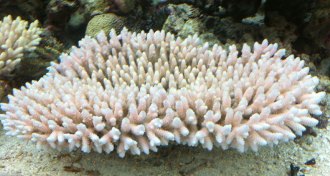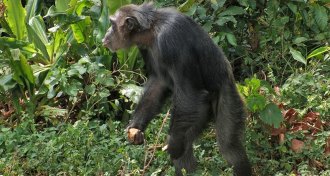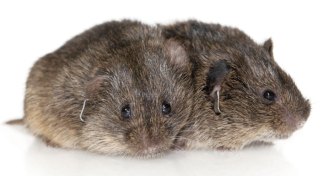Uncategorized
-
 Science & Society
Science & SocietySpecial Report: Gravity’s Century
After years of pondering the interplay of space, time, matter and gravity, Einstein produced, in a single month, an utter transformation of science’s conception of the cosmos: the general theory of relativity.
-
 Quantum Physics
Quantum PhysicsEntanglement: Gravity’s long-distance connection
The universe may be a vast quantum computer that safely encodes spacetime in an elaborate web of entanglement.
By Andrew Grant -
 Animals
AnimalsNo eyes, no problem for color-sensing coral larvae
Switching colors of underwater light can switch preferences for where staghorn corals choose their forever homes.
By Susan Milius -
 Particle Physics
Particle PhysicsNeutrinos’ identity shift snares physics Nobel
Arthur McDonald and Takaaki Kajita shared the 2015 Nobel Prize in physics for the discovery that neutrinos oscillate between different types, which demonstrates that the particles have mass.
By Andrew Grant and Thomas Sumner -
 Science & Society
Science & SocietyNeurological condition probably caused medieval scribe’s shaky handwriting
By scrutinizing a medieval scribe’s wiggly handwriting, scientists conclude that the writer suffered from essential tremor.
-
 Astronomy
AstronomyUsing general relativity to magnify the cosmos
Astronomers have Einstein to thank for the tools that bring far-away galaxies and maybe even black hole collisions into view.
-
 Humans
HumansChimpanzees show surprising flexibility on two feet
Chimpanzees’ upper-body flexibility while walking upright suggests ancient hominids walked effectively.
By Bruce Bower -
 Animals
AnimalsWhat really changes when a male vole settles down
Bachelor prairie voles can’t tell one female from another, but saying “I do” means more than just settling down.
By Susan Milius -
 Health & Medicine
Health & MedicineNobel medicine prize won for drugs from natural sources
Nobel Prizes in medicine or physiology awarded for drugs that combat roundworms and malaria
By Tina Hesman Saey and Laura Sanders -
 Science & Society
Science & SocietyFull coverage: 2015 Nobel Prizes
The Nobel Prizes in physics, chemistry and medicine or physiology ran the gamut this year, honoring both fundamental science discoveries and research with real-world impacts.
-
 Science & Society
Science & SocietyCentennial books illuminate Einstein’s greatest triumph
Scholars mark general relativity 100ths anniversary with books on history, biography, science.
-
 Astronomy
AstronomyEinstein’s genius changed science’s perception of gravity
Einstein struggled for years to solve the puzzle of general relativity. The pieces all fell into place in November 1915.